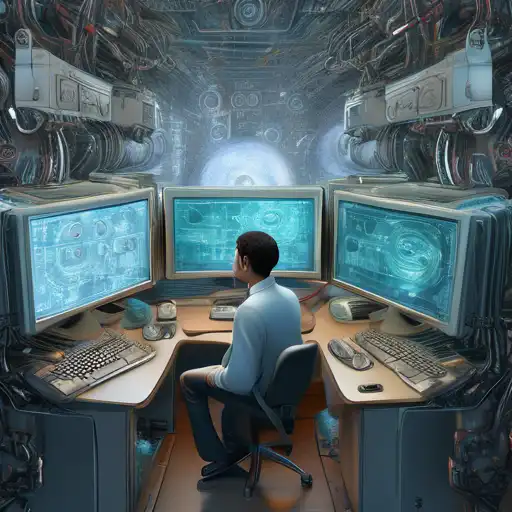Empowering Machines with Sight: The Evolution of Computer Vision
Computer vision is a field of artificial intelligence that trains computers to interpret and understand the visual world. By using digital images from cameras and videos and deep learning models, machines can accurately identify and classify objects — and then react to what they "see."
The Foundation of Computer Vision
At its core, computer vision seeks to replicate the complexity of human vision. It involves acquiring, processing, analyzing, and understanding digital images to extract high-dimensional data from the real world in order to produce numerical or symbolic information. This process is foundational for enabling machines to make decisions based on visual inputs.
How Computer Vision Works
Computer vision uses pattern recognition techniques to train machines to interpret the visual world. The process involves several steps:
- Image acquisition: Capturing images or videos from cameras.
- Pre-processing: Enhancing image quality for better analysis.
- Feature extraction: Identifying edges, textures, or shapes.
- Detection/segmentation: Isolating objects of interest.
- Recognition: Classifying objects based on learned models.
These steps are powered by machine learning and deep learning algorithms, which allow the system to improve over time.
Applications of Computer Vision
Computer vision has a wide range of applications across various industries:
- Healthcare: From diagnosing diseases through medical imaging to assisting in surgeries.
- Automotive: Enabling self-driving cars to navigate safely.
- Retail: Enhancing customer experience through facial recognition and automated checkouts.
- Security: Improving surveillance systems with real-time monitoring and anomaly detection.
These applications demonstrate the transformative potential of computer vision in our daily lives.
Challenges and Future Directions
Despite its advancements, computer vision faces challenges such as varying lighting conditions, occlusions, and the need for vast amounts of training data. However, ongoing research in artificial intelligence and computational power is paving the way for more robust and efficient systems.
The future of computer vision lies in achieving near-human levels of understanding and interaction with the visual world. With the integration of other AI technologies, the possibilities are limitless.
As we continue to teach machines to see, we unlock new opportunities for innovation and efficiency across all sectors of society. The journey of computer vision is just beginning, and its impact will be profound.
